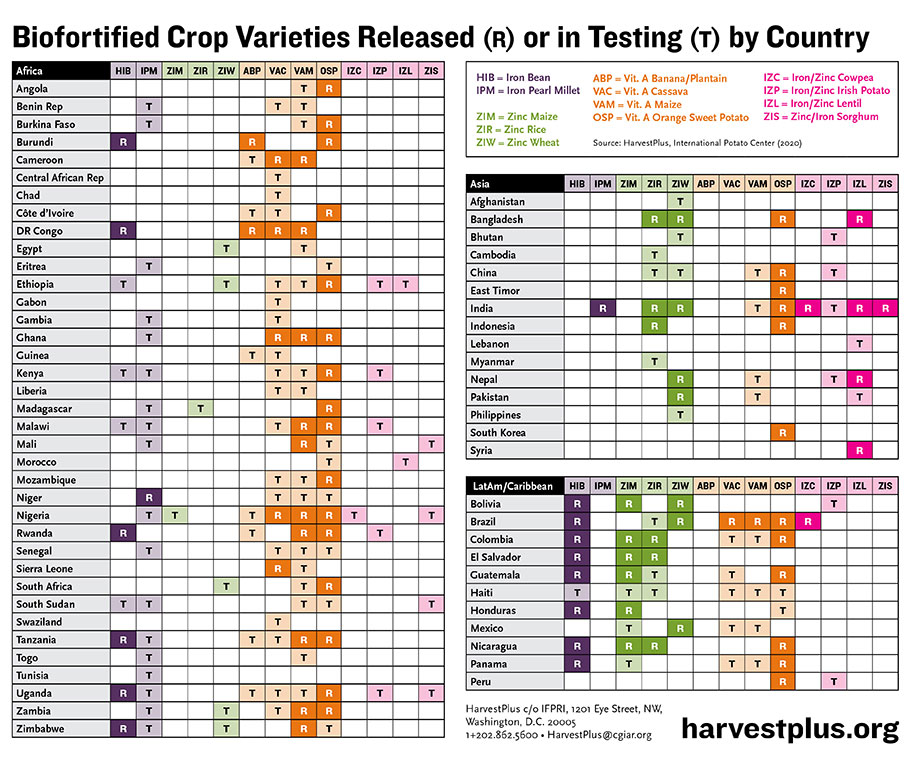HarvestPlus has updated its popular global map and table of biofortified staple crops with data on biofortified crop varieties released and in testing as of the end of 2020. The map and table cover several major staple crops ranging from cassava to wheat to beans, which have been biofortified with vitamin A, iron, and/or zinc.
The map indicates in which countries biofortified crop varieties had been released or were in testing by the end of 2020. The easy-to-read table shows crop information by country.
The crop varieties covered have been promoted by HarvestPlus or the International Potato Center, both of which are part of the CGIAR global research partnership for a food secure future. These biofortified varieties have been developed through conventional crop breeding techniques to increase the nutritional value of staple foods that are widely consumed by low-income families in Africa, Asia, and Latin America. Biofortified crops promoted by HarvestPlus include vitamin A cassava, maize, and sweet potato; iron beans and pearl millet; and zinc rice, maize, and wheat.
Experts in nutrition and agriculture work together to ensure these crops have sufficiently high levels of nutrients to improve nutrition and health; that they taste good and meet cooking requirements, and that they have agronomic traits farmers demand such as resistance to insects, diseases, and drought tolerance.
More than 48 million people in smallholder farming households are benefiting from conventionally bred biofortified crops facilitated by HarvestPlus. These crops improve nutrition and health status when eaten regularly. As more countries around the world adopt biofortification as part of a wider strategy to combat micronutrient deficiencies, HarvestPlus anticipates that more than 1 billion people will be benefitting from biofortified foods by 2030.
Separately, HarvestPlus has updated the Biofortification Priority Index website, an analytical tool to help guide investments in biofortified crops. the BPI ranks the potential nutrition and health impact of biofortification of 13 types of staple crops across 128 countries covered by the Index.

